The Symbolization of Regional Elements Based on Local-Chronicle Text Mining and Image-Feature Extraction
Abstract
:1. Introduction
2. Case Study and Data Source
3. Methods
3.1. A Method for Extracting Semantic Relations of Regional Cultural Elements
3.1.1. Text Pre-Processing
3.1.2. Text Information Mining Based on Jieba Word Separation Package
3.1.3. Constructing Text Co-Occurrence Networks Based on Gephi Software
- Average Degree: this is the average value of the degree (number of connections to other nodes) of all nodes in the network. It can be used to reflect the average connectivity of nodes in the network.
- Graph density is defined as the ratio of the number of edges present in the network to the maximum number of edges that could be present. It is used as a measure of the network’s connectivity.
- Average clustering coefficient: the average of the clustering coefficients of individual nodes in the network, which reflects the local clustering characteristics of the network and indicates the tendency of keywords to cluster in the network.
- Modularity: an indicator of the quality of the community structure in the network. Modular community detection allows the identification of keyword clusters that may correspond to different topics or concepts in the text.
3.2. Symbol Design Methodology for Regional Cultural Elements
3.2.1. Segmenting the Main Body of the Image Based on GrabCut Algorithm
3.2.2. Extracting Image Subject Contour Based on Canny Algorithm
3.2.3. Extraction of Image Theme Colors Based on K-Means Clustering Algorithm
3.2.4. Symbol Simplification Based on Cartographic Generalization Ideas
3.2.5. Symbol Evaluation Based on Questionnaire Survey
4. Results
- The textual information was primarily categorized into three thematic contents: monuments and sites, historical buildings, and literary and artistic carvings.
- The regional elements characterized by distinct local features predominantly included the Shaolin Temple, Ancient Pagoda, Zhongyue Temple, and so on.
- The regional elements with strong relevance included the Shaolin Temple and monks, the Shaolin Temple and monasteries, sites and cultural relic protection, and so on.
5. Discussion
6. Conclusions
- In terms of regional-element extraction, this study took local chronicles as the research object, utilized text mining technology to extract keywords in local chronicle texts through Jieba, and then applied Gephi software to construct a word co-occurrence network. This effectively revealed the correlation and mutual influence between different feature elements, allowing for the accurate identification of the regional elements in the study area.
- In terms of map symbol design, this study adopted a series of image-processing techniques. The GrabCcut algorithm was used to effectively segment the main body of the features, the Canny edge-detection algorithm was used to accurately identify the edges and shapes of the features, and the K-means clustering algorithm was used to extract the color schemes. Finally, Adobe Illustrator (2020) software was used to combine the symbols and simplify their shapes, creating map symbols with regional characteristics that were easy to identify. This effectively improved the information transfer efficiency and visual aesthetics of the map.
Author Contributions
Funding
Data Availability Statement
Acknowledgments
Conflicts of Interest
Appendix A
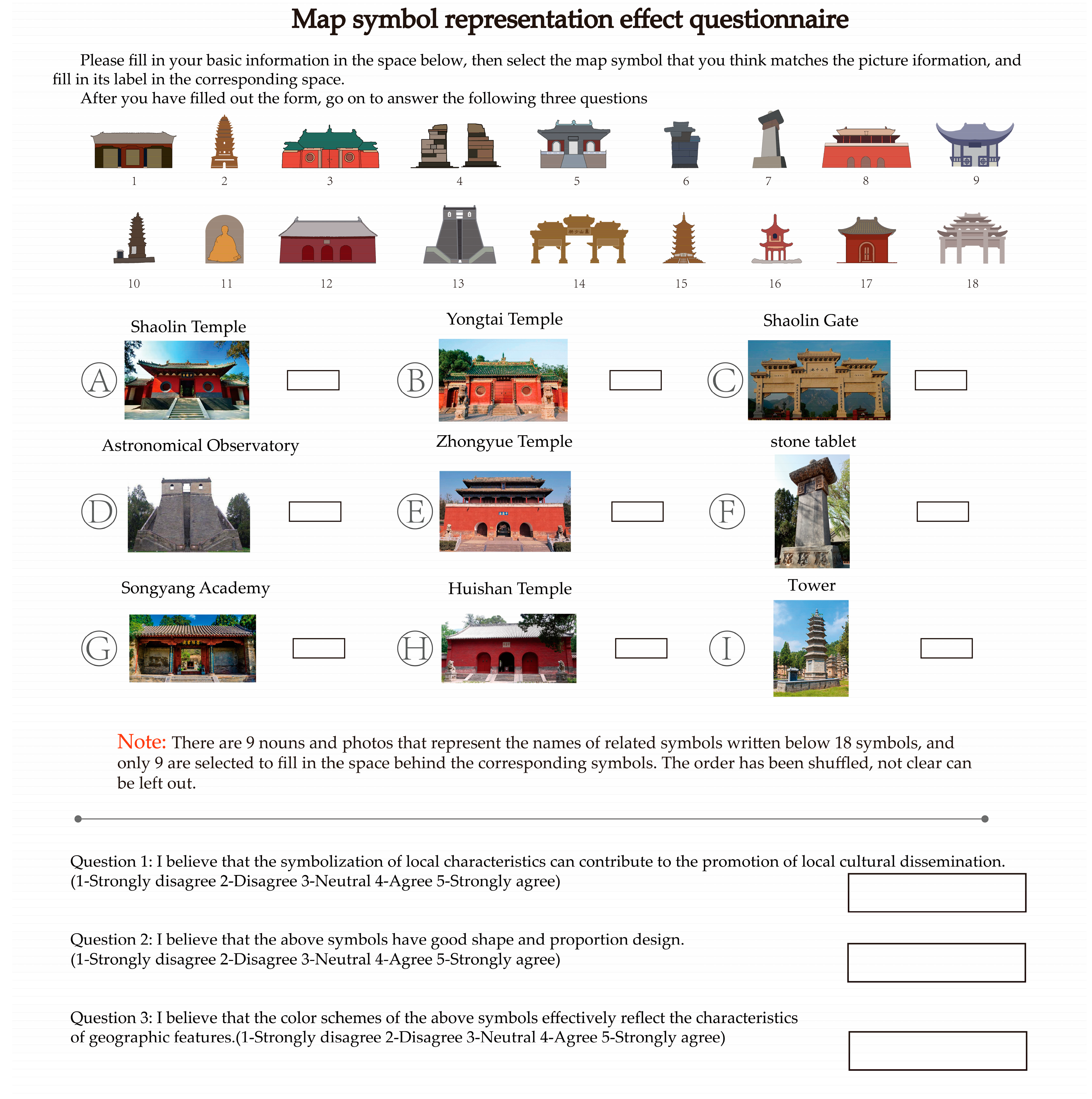
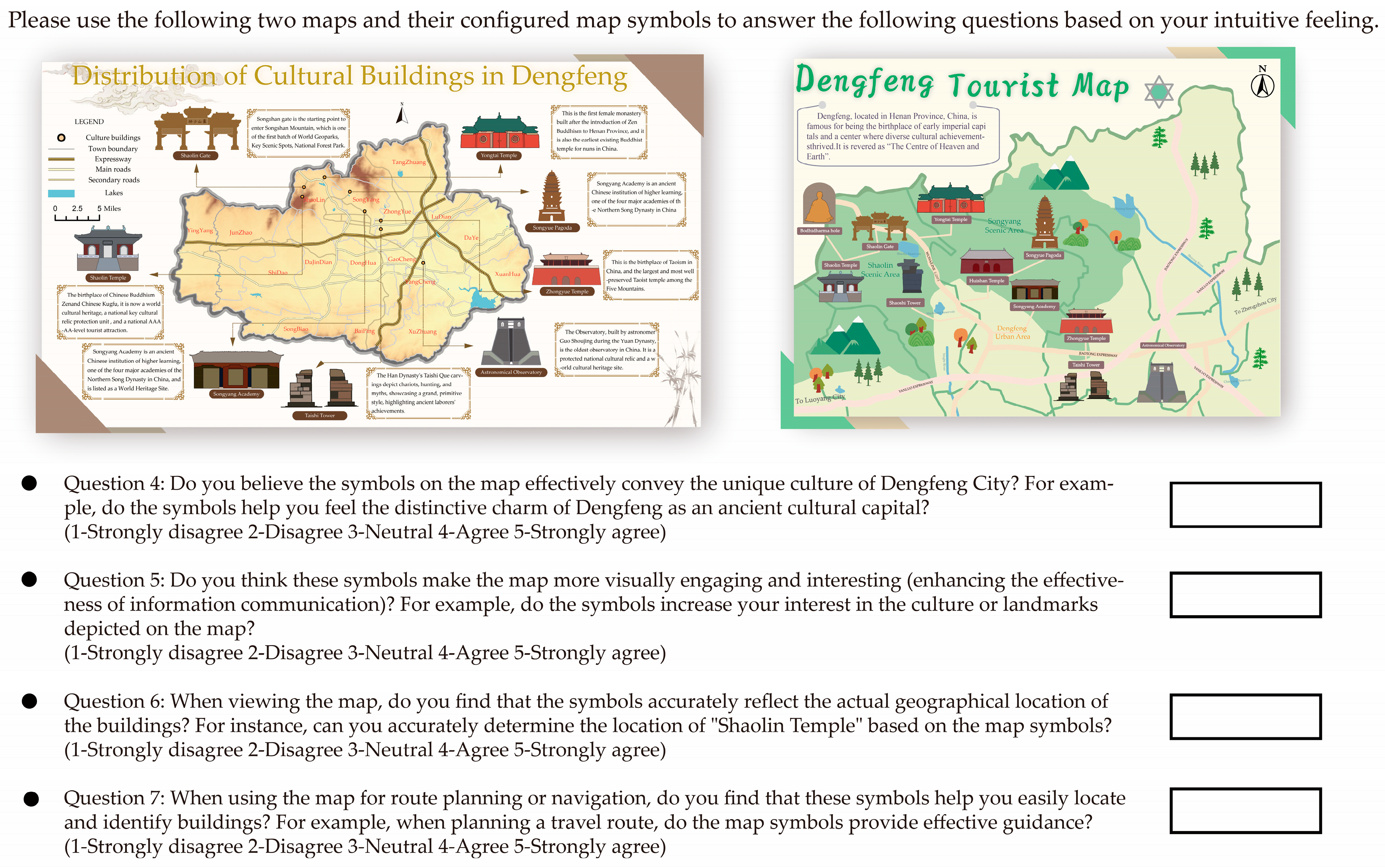
References
- Heng, Z.; Hou, H. Produce mining in the local chronicle and its system construction. J. China Soc. Sci. Tech. Inf. 2009, 28, 175–181. [Google Scholar] [CrossRef]
- Wang, Y.; Wang, H.; Yu, W.; Zhou, Z. Extracting Relationship Among Characters from Local Chronicles with Text Structures and Contents. Data Anal. Knowl. Discov. 2022, 6, 318–328. [Google Scholar]
- Xiao, L.; Yan, J. Reconstruction of poor/bumper autumn harvest index series based on historical chorography and its relationship with climate change in North China from 1736 to 1911. Acta Geogr. Sin. 2019, 74, 1777–1788. [Google Scholar]
- Ge, T.; Pei, W.; Ji, H.; Li, S.; Chang, B.; Sui, Z. Bring you to the past: Automatic Generation of Topically Relevant Event Chronicles. In Proceedings of the 7th International Joint Conference on Natural Language Processing of the Asian-Federation-of-Natural-Language-Processing (IJCNLP), Beijing, China, 26–31 July 2015; pp. 575–585. [Google Scholar]
- Akaishi, M.; Sato, M.; Hori, K.; Ishikawa, T. A Visual Analysis Tool for Finding Embedded Relations in Chronicles. In Proceedings of the 2012 16th International Conference on Information Visualisation, Montpellier, France, 11–13 July 2012; pp. 302–307. [Google Scholar]
- Li, D.; Liang, H. The alternation and contradiction between thrift and luxury: Headdress custom recordedin local chronicles in the Jiangnan area of the Ming Dynasty. J. Silk 2023, 60, 149–155. [Google Scholar]
- Ye, L.; Lin, H.; Chen, X. Narrative Design of Red Cultural Heritage Landscape in Jiangxi Province—Take Fang Zhimin Martyrs’ Memorial Park as An Example. J. Res. Sci. Eng. 2024, 6. [Google Scholar] [CrossRef]
- Zhen, W.; Huang, S.; Tian, Z.; Yang, X. A Novel Visual Narrative Framework for Tourist Map Design Based on Local Chronicles: A Case Study of the Songshan Scenic Area. Isprs Int. J. Geo-Inf. 2024, 13, 45. [Google Scholar] [CrossRef]
- He, X.; Liu, C.; Wu, L.; Wang, Y.; Tian, Z. Thematic Content and Visualization Strategy for Map Design of City-Specific Culture Based on Local Chronicles: A Case Study of Dengfeng City, China. Isprs Int. J. Geo-Inf. 2022, 11, 542. [Google Scholar] [CrossRef]
- Xie, Y.; Peng, X.; Huang, Z.; Liu, Y. Image perception of Beijing’s regional hotspots based on microblog data. Prog. Geogr. 2017, 36, 1099–1110. [Google Scholar]
- Kas, M.; Carley, K.M.; Carley, L.R. Trends in science networks: Understanding structures and statistics of scientific networks. Social Netw. Analys. Min. 2012, 2, 169–187. [Google Scholar] [CrossRef]
- Bartonek, D.; Andelová, P. Method for Cartographic Symbols Creation in Connection with Map Series Digitization. Isprs Int. J. Geo-Inf. 2022, 11, 105. [Google Scholar] [CrossRef]
- Field, K.; Demaj, D. Reasserting Design Relevance in Cartography: Some Concepts. Cartogr. J. 2012, 49, 70–76. [Google Scholar] [CrossRef]
- Jacques, B. Graphics and Graphic Information Processing; DE GRUYTER: Berlin, Germany, 1981; p. 280. [Google Scholar]
- Cao, Y.; Jiang, N.; Zhang, Y.; Zhang, X. Constitution Variables and Generation Modes of Electronic Map Symbols. Acta Geod. Cartogr. Sin. 2012, 41, 784–790. [Google Scholar]
- Shuang, L.; Sasaki, J. A Study on the Tourism Features Extraction from Photos in a Tourism Website by Image Analysis. In Proceedings of the 2019 IEEE 10th International Conference on Awareness Science and Technology (iCAST), Morioka, Japan, 23–25 October 2019; p. 5. [Google Scholar]
- Rekha, V.; Natarajan, K.; Innila, R.J. Foreground algorithms for detection and extraction of an object in multimedia. Int. J. Electr. Comput. Eng. 2020, 10, 1849–1858. [Google Scholar]
- Zhang, K.; Chen, H. Building Extraction from High-Resolution Remote Sensing Images Based on GrabCut with Automatic Selection of Foreground and Background Samples. Photogramm. Eng. Remote Sens. 2020, 86, 235–245. [Google Scholar] [CrossRef]
- Sasikala, N.; Shruthi, C.; Mohana, A.; Harika, M.; Supriya, S. An Adaptive Edge Detecting Method for Satellite Imagery Based on Canny Edge Algorithm. Int. J. Adv. Eng. Res. Sci. 2020, 7, 293–298. [Google Scholar] [CrossRef]
- Libor, L.; Martin, K. Automatic buildings detection using Sobel, Roberts, Canny and Prewwitt detector. J. Electr. Eng. 2021, 72, 278–282. [Google Scholar]
- Molada-Tebar, A.; Marqués-Mateu, Á.; Lerma, J.L.; Westland, S. Dominant Color Extraction with K-Means for Camera Characterization in Cultural Heritage Documentation. Remote Sens. 2020, 12, 520. [Google Scholar] [CrossRef]
- Takahashi, N.; Sakamoto, T.; Kato, T. Color-analysis of Image Photography of Interior Brand based on Extraction of Representative Colors and Clustered Color-features. Trans. Jpn. Soc. Kansei Eng. 2016, 15, 203–212. [Google Scholar] [CrossRef]
- Thordarson, T.; Larsen, G. Volcanism in Iceland in historical time: Volcano types, eruption styles and eruptive history. J. Geodyn. 2007, 43, 118–152. [Google Scholar] [CrossRef]
- Kubo, M.; Hara, S.; Sekino, T. Three-dimensional Spatiotemporal Model and its Application to Analysis of Research Resources: Toward Constructing Historical Knowledge. J. Jpn. Soc. Artif. Intell. 2010, 25, 50–55. [Google Scholar]
- Zhu, S.; Bao, P. The use of Geographic Information System in the development and utilization of ancient local chronicles. Libr. Hi Tech 2015, 33, 356–368. [Google Scholar] [CrossRef]
- Tian, Z.; Liu, Y.; Wang, Y.; Wu, L. A Tourist Behavior Analysis Framework Guided by Geo-Information Tupu Theory and Its Application in Dengfeng City, China. Isprs Int. J. Geo-Inf. 2022, 11, 250. [Google Scholar] [CrossRef]
- Lv, H. Dengfeng City Chronicle; Zhongzhou Ancient Books: Zhengzhou, China, 2008. [Google Scholar]
- Liu, Q.; Zheng, Z.; Zheng, J.; Chen, Q.; Liu, G.; Chen, S.; Chu, B.; Zhu, H.; Akinwunmi, B.; Huang, J.; et al. Health Communication Through News Media During the Early Stage of the COVID-19 Outbreak in China: Digital Topic Modeling Approach. J. Med. Internet Res. 2020, 22. [Google Scholar] [CrossRef] [PubMed]
- Peng, K.-H.; Liou, L.-H.; Chang, C.-S.; Lee, D.-S. Predicting Personality Traits of Chinese Users Based on Facebook Wall Posts. In Proceedings of the 24th Wireless and Optical Communication Conference (WOCC), Taipei, Taiwan, 23–24 October 2015; pp. 9–14. [Google Scholar]
- Jacomy, M.; Venturini, T.; Heymann, S.; Bastian, M. ForceAtlas2, a Continuous Graph Layout Algorithm for Handy Network Visualization Designed for the Gephi Software. PLoS ONE 2014, 9. [Google Scholar] [CrossRef]
- Rother, C.; Kolmogorov, V.; Blake, A. “GrabCut”—Interactive foreground extraction using iterated graph cuts. ACM Trans. Graph. 2004, 23, 309–314. [Google Scholar] [CrossRef]
- Ning-Yu, A.; Chi-Man, P. Iterated graph cut integrating texture characterization for interactive image segmentation. In Proceedings of the 2013 10th International Conference on Computer Graphics, Imaging and Visualization (CGIV), Los Alamitos, CA, USA, 6–8 August 2013; pp. 79–83. [Google Scholar] [CrossRef]
- Canny, J. A Computational approach to edge-detection. IEEE Trans. Pattern Anal. Mach. Intell. 1986, 8, 679–698. [Google Scholar] [CrossRef] [PubMed]
- Rong, W.B.; Li, Z.J.; Zhang, W.; Sun, L.N. An Improved Canny Edge Detection Algorithm. In Proceedings of the 11th IEEE International Conference on Mechatronics and Automation (ICMA), Tianjin, China, 3–6 August 2014; pp. 577–582. [Google Scholar]
- Hartigan, J.A.; Wong, M.A. A K-means clustering algorithm. Appl. Stat. 1979, 28, 100–108. [Google Scholar] [CrossRef]
- Jiayao, W.; Haizhong, Q. Cartographic-generalization-knowledge and Its Application. Geomat. Inf. Sci. Wuhan Univ. 2006, 31, 382. [Google Scholar]
- Zagata, K.; Gulij, J.; Halik, L.; Medynska-Gulij, B. Mini-Map for Gamers Who Walk and Teleport in a Virtual Stronghold. Isprs Int. J. Geo-Inf. 2021, 10, 96. [Google Scholar] [CrossRef]
- Medynska-Gulij, B.; Zagata, K. Experts and Gamers on Immersion into Reconstructed Strongholds. Isprs Int. J. Geo-Inf. 2020, 9, 655. [Google Scholar] [CrossRef]

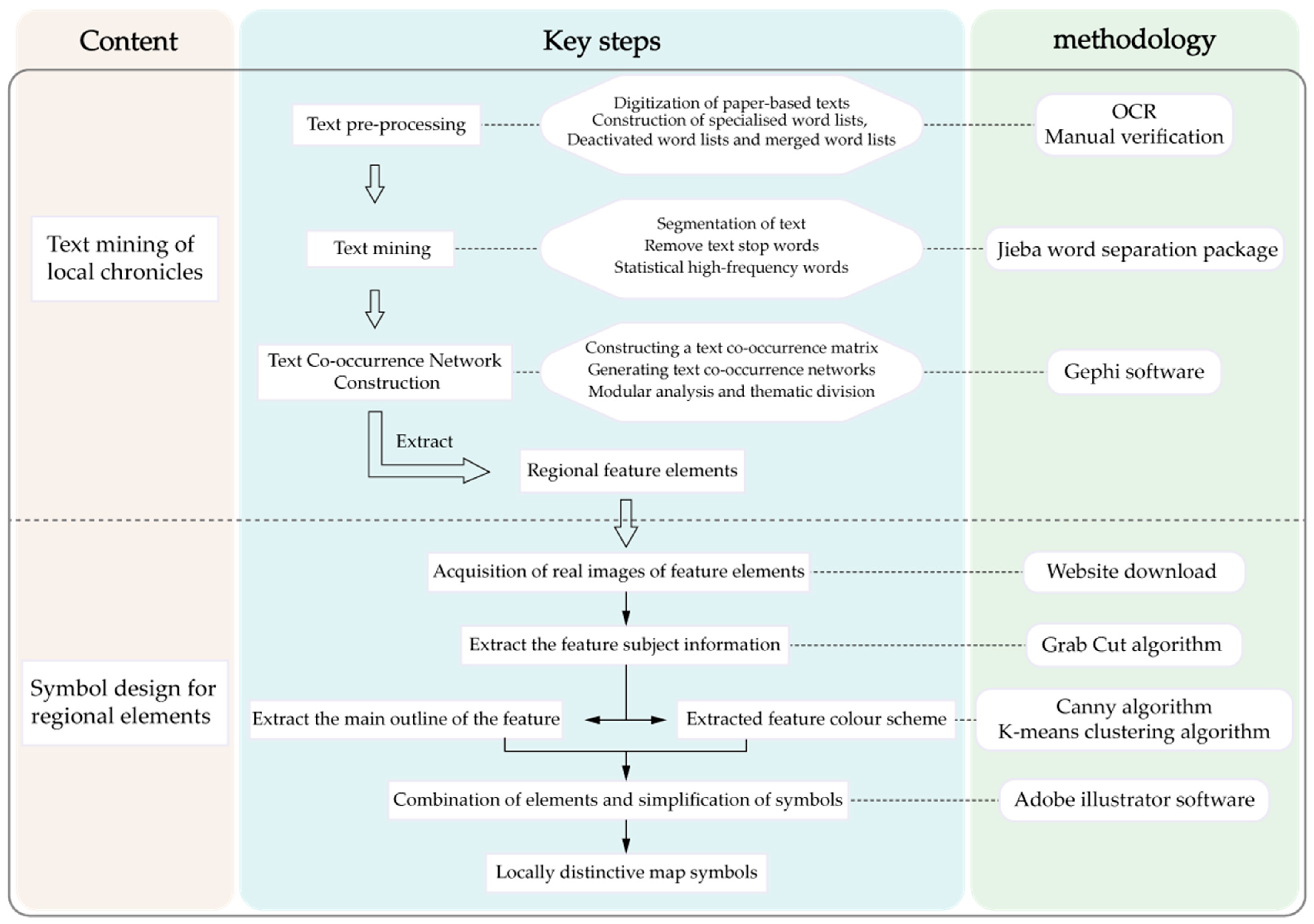

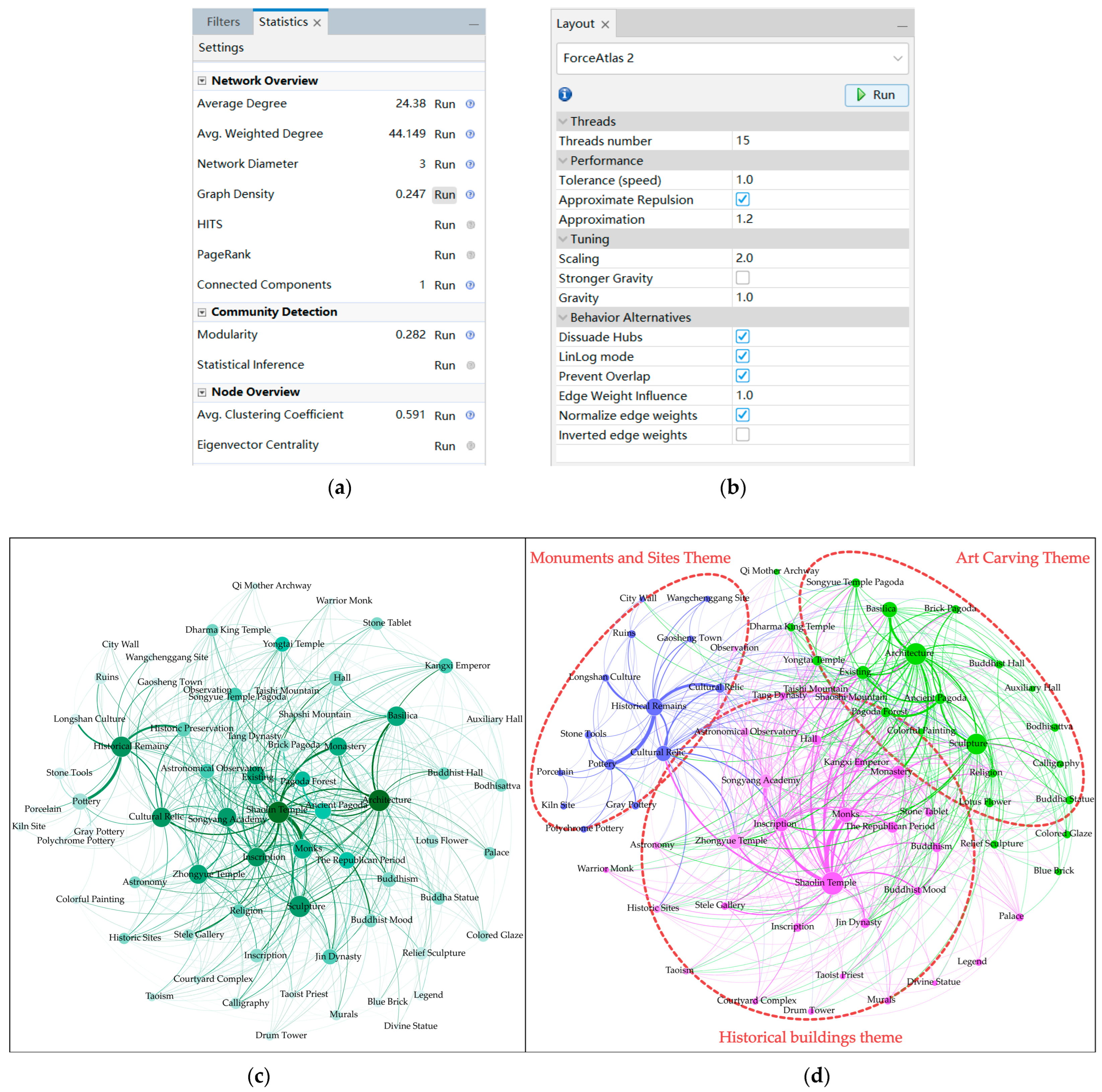
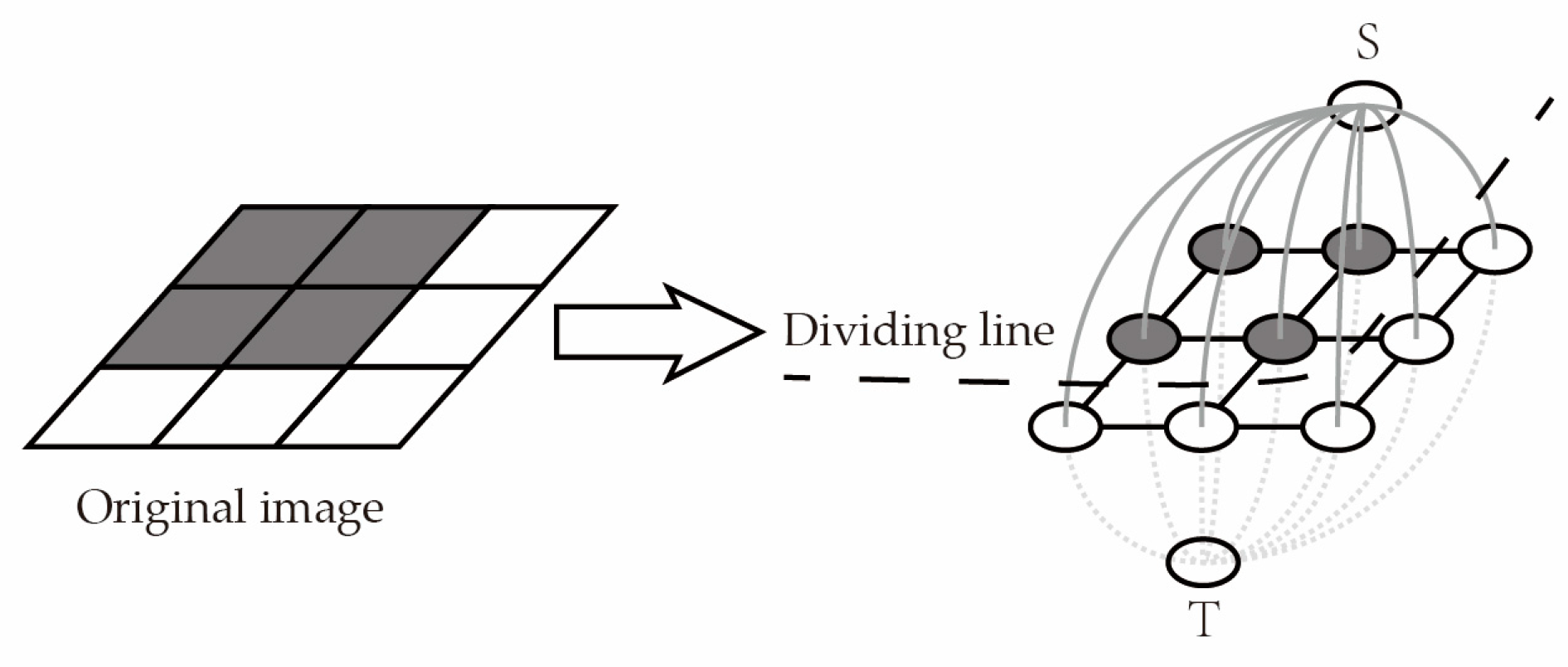
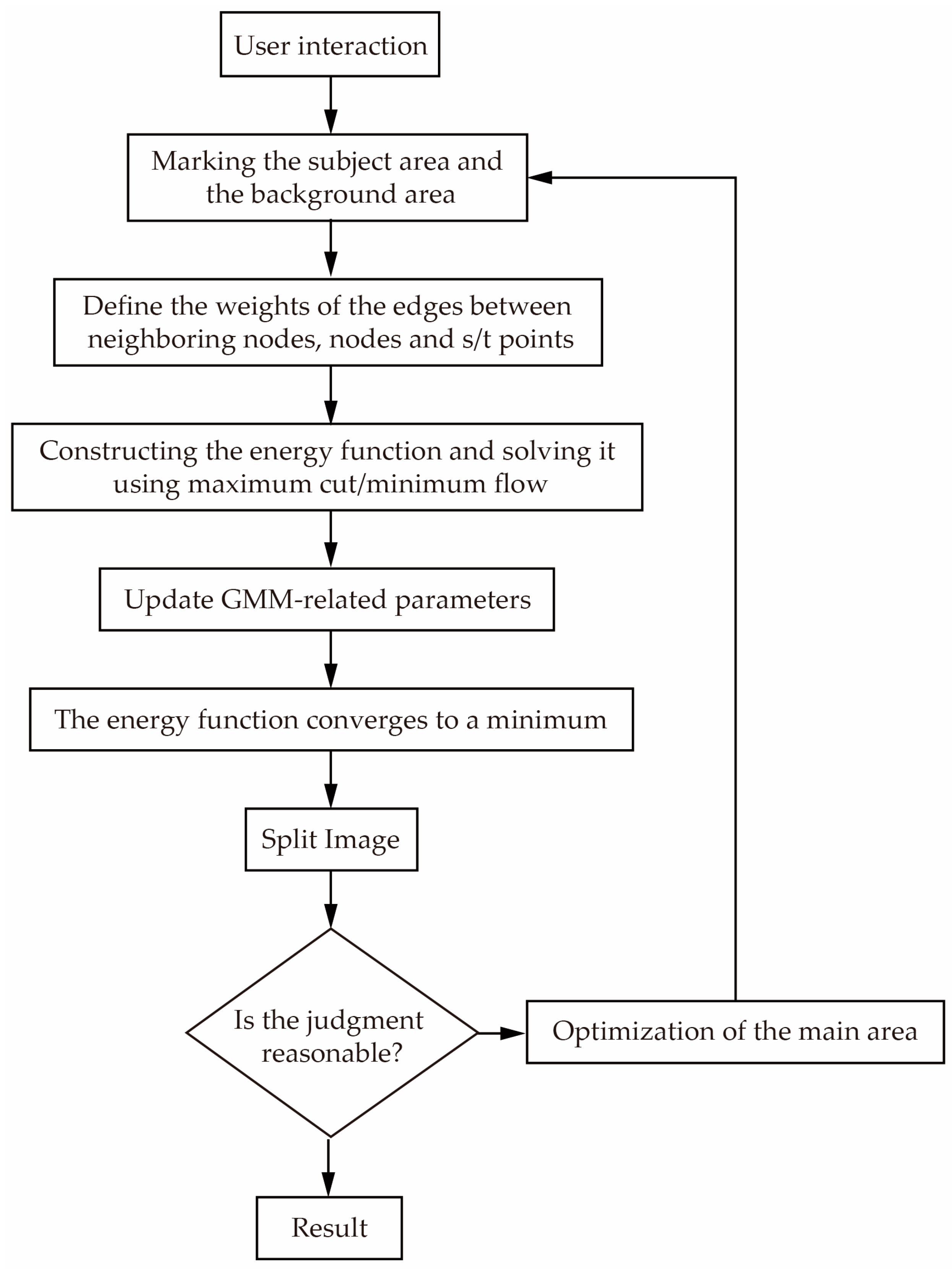
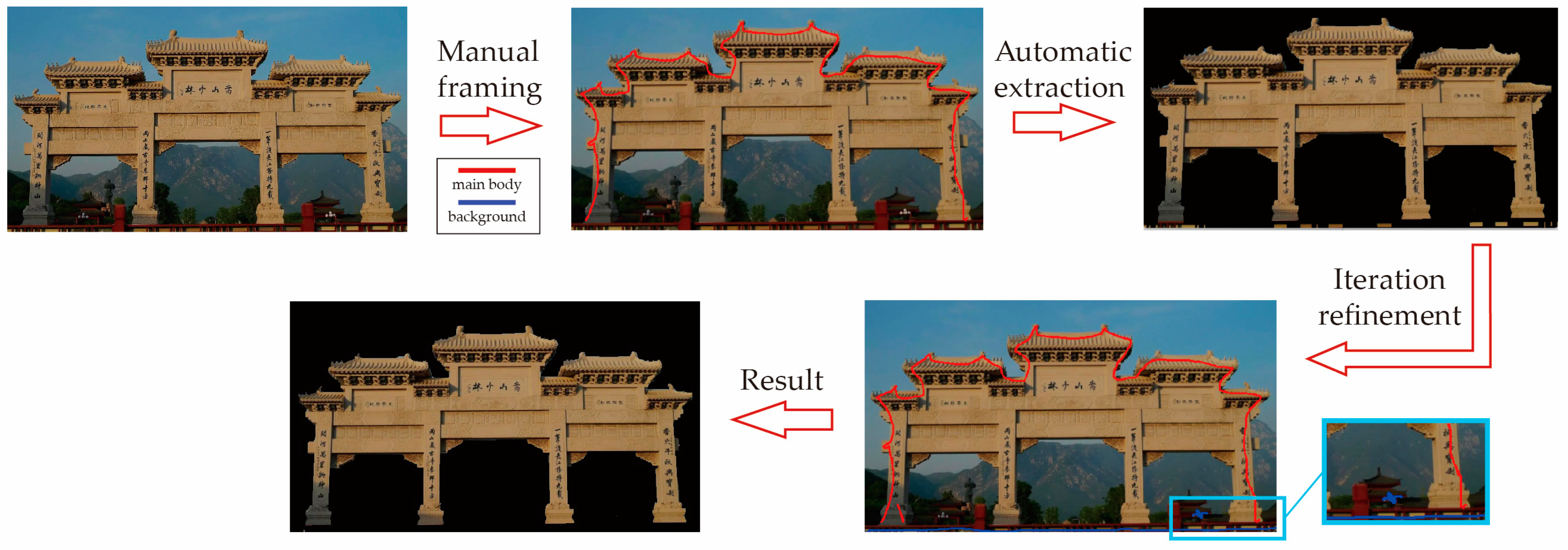




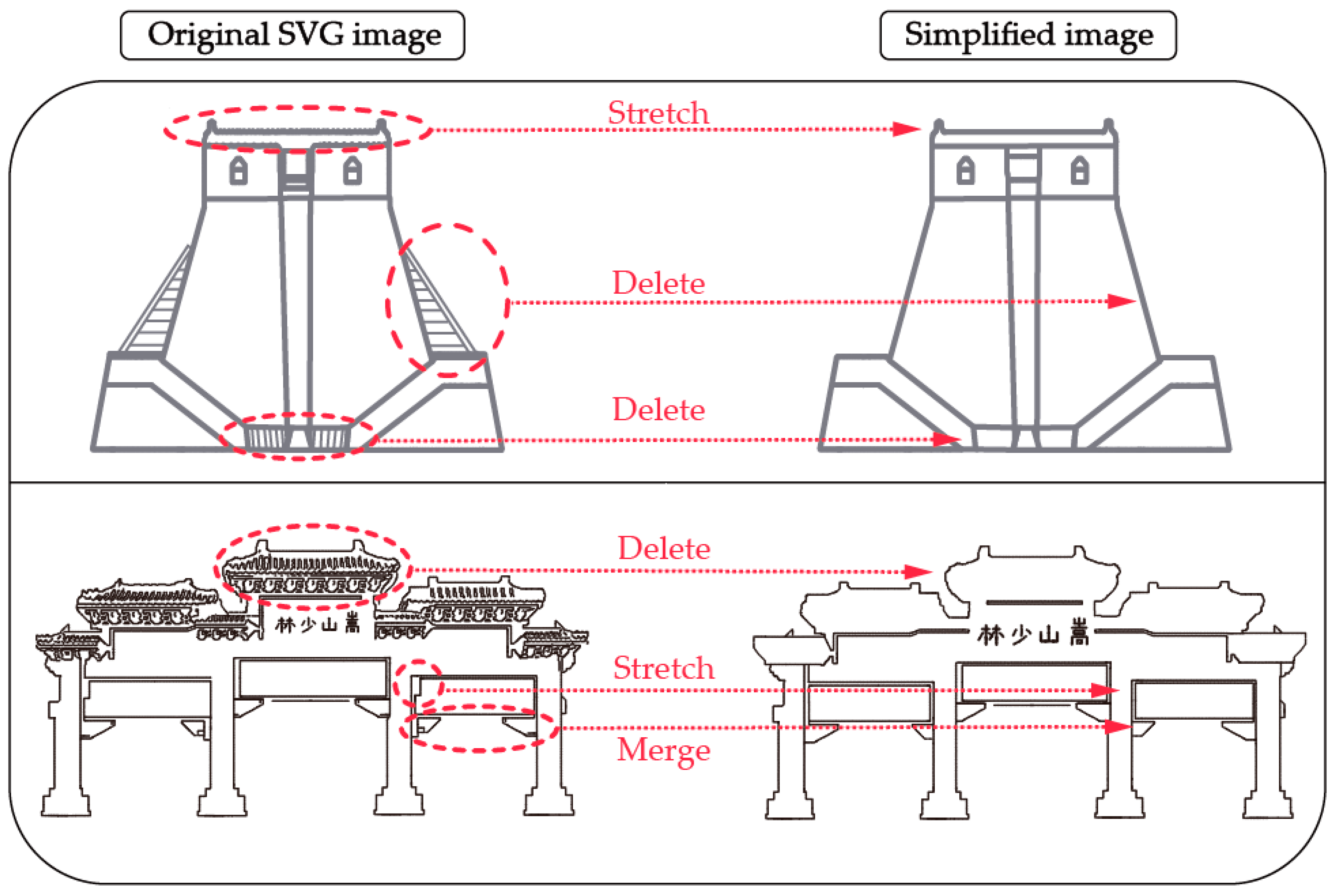



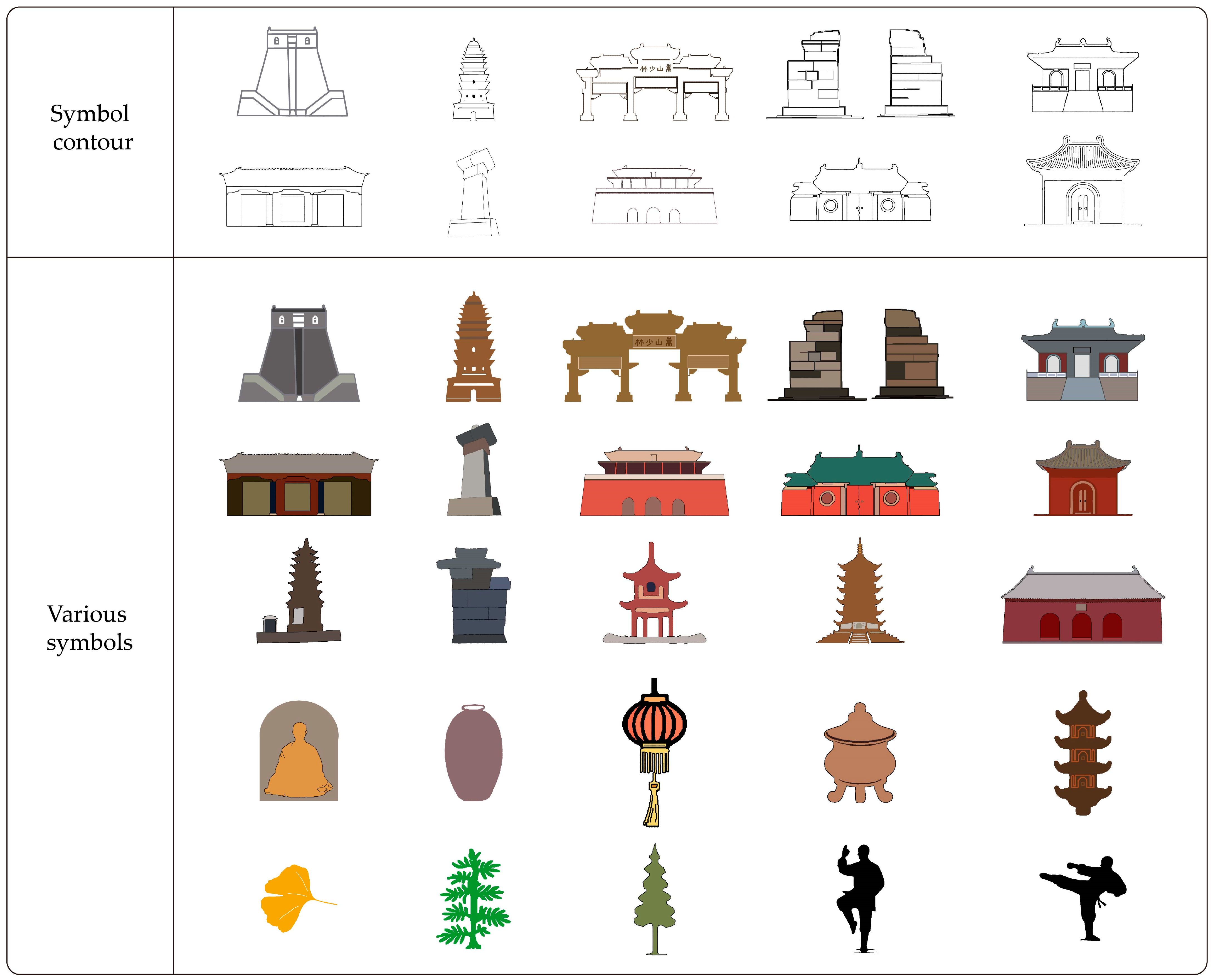





| Type | Content | Source | Data Advantage |
|---|---|---|---|
| Text | Monuments and heritage section | Dengfeng City Chronicle in 2008 | Official Detailed Logical |
| Image | Folklore and cultural elements, landmarks, etc. Shaolin Temple  Astronomical Observation Terrace  Buddhist monks  | Dengfeng City Government Official Website (www.dengfeng.gov.cn/) Baidu Gallery (image.baidu.com/) | Authoritative Rich variety High-resolution |
| Number | Word | Frequency | Part of Speech |
|---|---|---|---|
| 1 | Shaolin Temple | 147 | Noun—place name |
| 2 | Architecture | 125 | Noun |
| 3 | Sculpture | 94 | Verb |
| 4 | Historical remains | 86 | Noun |
| 5 | Cultural relic | 74 | Noun |
| 6 | Basilica | 74 | Noun |
| 7 | Monks | 69 | Noun |
| 8 | Zhongyue Temple | 68 | Noun—place name |
| 9 | Inscription | 64 | Noun |
| 10 | Songyang Academy | 63 | Noun—place name |
| 11 | Monastery | 60 | Noun |
| 12 | Existing | 47 | Time word |
| 13 | The republican period | 45 | Time word |
| 14 | Ancient pagoda | 40 | Noun |
| Word | Shaolin Temple | Historical Remains | Architecture | Cultural Relic | Sculpture | Inscription | Monastery | Monk | Songyang Academy |
|---|---|---|---|---|---|---|---|---|---|
| Shaolin Temple | 0 | 2 | 1 | 7 | 0 | 17 | 13 | 33 | 6 |
| Historical remains | 0 | 0 | 2 | 4 | 0 | 11 | 0 | 0 | 13 |
| Architecture | 14 | 1 | 0 | 1 | 5 | 1 | 12 | 1 | 3 |
| Cultural relic | 12 | 19 | 2 | 0 | 3 | 8 | 0 | 1 | 6 |
| Sculpture | 8 | 3 | 4 | 1 | 0 | 7 | 0 | 5 | 2 |
| Inscription | 1 | 0 | 3 | 0 | 0 | 0 | 5 | 7 | 8 |
| Monastery | 2 | 0 | 0 | 0 | 0 | 6 | 0 | 3 | 2 |
| Monk | 13 | 0 | 2 | 0 | 1 | 0 | 12 | 0 | 3 |
| Songyang Academy | 5 | 1 | 0 | 0 | 0 | 7 | 0 | 0 | 0 |
| Method | Principle | Typical Example |
|---|---|---|
| Delete | To better display and emphasize key features of a map object, it is occasionally necessary to exaggerate fragmented areas that may be overlooked at conventional scales of demarcation. This approach serves to highlight their significance or unique characteristics within the overall context. | 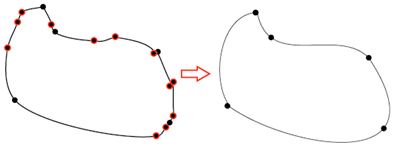 |
| Stretch | By reducing the number of bends in the line, the outline becomes smooth and clear, eliminating unnecessary complexity and preserving the more intuitive shape characteristics. |  |
| Merge | To simplify the overall map structure, adjacent or functionally similar contours should be combined into a larger unit. This approach not only reduces the over-representation of detail, but also enhances map readability by emphasizing key features. |  |
| ID | Q1 | Q2 | Q3 | Q4 | Q5 | Q6 | Q7 | ID | Q1 | Q2 | Q3 | Q4 | Q5 | Q6 | Q7 |
|---|---|---|---|---|---|---|---|---|---|---|---|---|---|---|---|
| 1 | 5 | 5 | 4 | 4 | 4 | 4 | 5 | 26 | 4 | 4 | 4 | 5 | 4 | 4 | 4 |
| 2 | 4 | 4 | 4 | 4 | 4 | 4 | 4 | 27 | 4 | 4 | 4 | 4 | 4 | 5 | 5 |
| 3 | 5 | 4 | 3 | 5 | 4 | 5 | 5 | 28 | 5 | 3 | 5 | 5 | 4 | 4 | 5 |
| 4 | 4 | 5 | 4 | 5 | 4 | 5 | 4 | 29 | 5 | 5 | 4 | 3 | 5 | 4 | 5 |
| 5 | 5 | 4 | 5 | 4 | 4 | 5 | 4 | 30 | 4 | 4 | 5 | 4 | 5 | 5 | 4 |
| 6 | 4 | 4 | 4 | 5 | 3 | 5 | 4 | 31 | 4 | 5 | 4 | 4 | 5 | 4 | 4 |
| 7 | 5 | 4 | 4 | 4 | 5 | 4 | 4 | 32 | 4 | 5 | 5 | 5 | 5 | 4 | 4 |
| 8 | 4 | 4 | 5 | 4 | 4 | 5 | 4 | 33 | 4 | 5 | 5 | 4 | 4 | 4 | 5 |
| 9 | 5 | 4 | 5 | 4 | 4 | 4 | 5 | 34 | 4 | 4 | 4 | 4 | 4 | 5 | 5 |
| 10 | 5 | 4 | 5 | 5 | 5 | 5 | 4 | 35 | 5 | 4 | 4 | 5 | 4 | 5 | 5 |
| 11 | 4 | 5 | 4 | 5 | 4 | 4 | 4 | 36 | 3 | 4 | 3 | 3 | 2 | 3 | 3 |
| 12 | 3 | 4 | 3 | 4 | 2 | 4 | 4 | 37 | 5 | 4 | 4 | 5 | 5 | 5 | 4 |
| 13 | 5 | 4 | 4 | 5 | 4 | 5 | 4 | 38 | 5 | 5 | 5 | 4 | 4 | 5 | 4 |
| 14 | 5 | 4 | 5 | 5 | 5 | 4 | 5 | 39 | 5 | 4 | 5 | 4 | 5 | 4 | 5 |
| 15 | 5 | 5 | 4 | 4 | 4 | 5 | 4 | 40 | 4 | 5 | 5 | 5 | 4 | 5 | 5 |
| 16 | 4 | 4 | 5 | 5 | 4 | 5 | 4 | 41 | 4 | 3 | 4 | 2 | 3 | 4 | 3 |
| 17 | 5 | 3 | 4 | 5 | 4 | 4 | 5 | 42 | 3 | 4 | 4 | 3 | 4 | 3 | 3 |
| 18 | 4 | 5 | 4 | 4 | 4 | 5 | 4 | 43 | 2 | 4 | 2 | 4 | 3 | 2 | 4 |
| 19 | 4 | 5 | 5 | 4 | 5 | 4 | 4 | 44 | 3 | 4 | 3 | 4 | 2 | 4 | 4 |
| 20 | 5 | 4 | 5 | 5 | 5 | 4 | 5 | 45 | 4 | 5 | 5 | 5 | 5 | 5 | 4 |
| 21 | 4 | 4 | 5 | 5 | 5 | 5 | 4 | 46 | 4 | 2 | 4 | 4 | 4 | 4 | 2 |
| 22 | 5 | 4 | 4 | 5 | 5 | 3 | 5 | 47 | 3 | 3 | 4 | 3 | 4 | 2 | 3 |
| 23 | 5 | 5 | 4 | 5 | 4 | 5 | 5 | 48 | 5 | 4 | 3 | 3 | 4 | 2 | 4 |
| 24 | 4 | 5 | 4 | 5 | 4 | 4 | 4 | 49 | 4 | 2 | 3 | 3 | 4 | 2 | 3 |
| 25 | 4 | 4 | 5 | 4 | 5 | 5 | 4 | 50 | 5 | 4 | 3 | 4 | 2 | 3 | 5 |
Disclaimer/Publisher’s Note: The statements, opinions and data contained in all publications are solely those of the individual author(s) and contributor(s) and not of MDPI and/or the editor(s). MDPI and/or the editor(s) disclaim responsibility for any injury to people or property resulting from any ideas, methods, instructions or products referred to in the content. |
© 2024 by the authors. Licensee MDPI, Basel, Switzerland. This article is an open access article distributed under the terms and conditions of the Creative Commons Attribution (CC BY) license (https://creativecommons.org/licenses/by/4.0/).
Share and Cite
Wu, L.; Cao, D.; Yang, J.; Zhang, R.; Yan, X. The Symbolization of Regional Elements Based on Local-Chronicle Text Mining and Image-Feature Extraction. ISPRS Int. J. Geo-Inf. 2024, 13, 299. https://doi.org/10.3390/ijgi13090299
Wu L, Cao D, Yang J, Zhang R, Yan X. The Symbolization of Regional Elements Based on Local-Chronicle Text Mining and Image-Feature Extraction. ISPRS International Journal of Geo-Information. 2024; 13(9):299. https://doi.org/10.3390/ijgi13090299
Chicago/Turabian StyleWu, Lili, Di Cao, Jinjin Yang, Ruoyi Zhang, and Xinran Yan. 2024. "The Symbolization of Regional Elements Based on Local-Chronicle Text Mining and Image-Feature Extraction" ISPRS International Journal of Geo-Information 13, no. 9: 299. https://doi.org/10.3390/ijgi13090299




